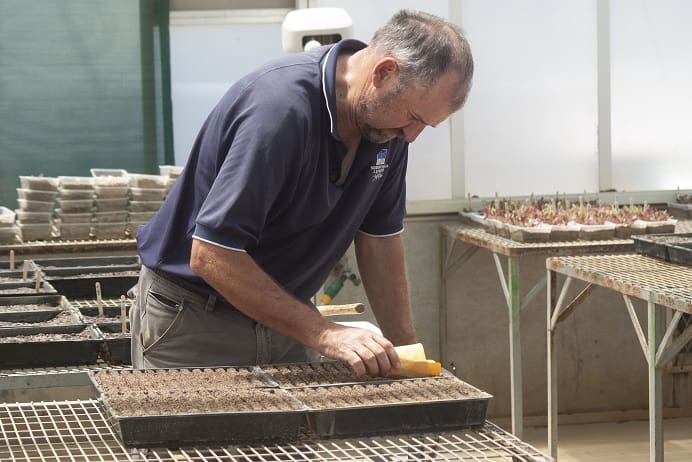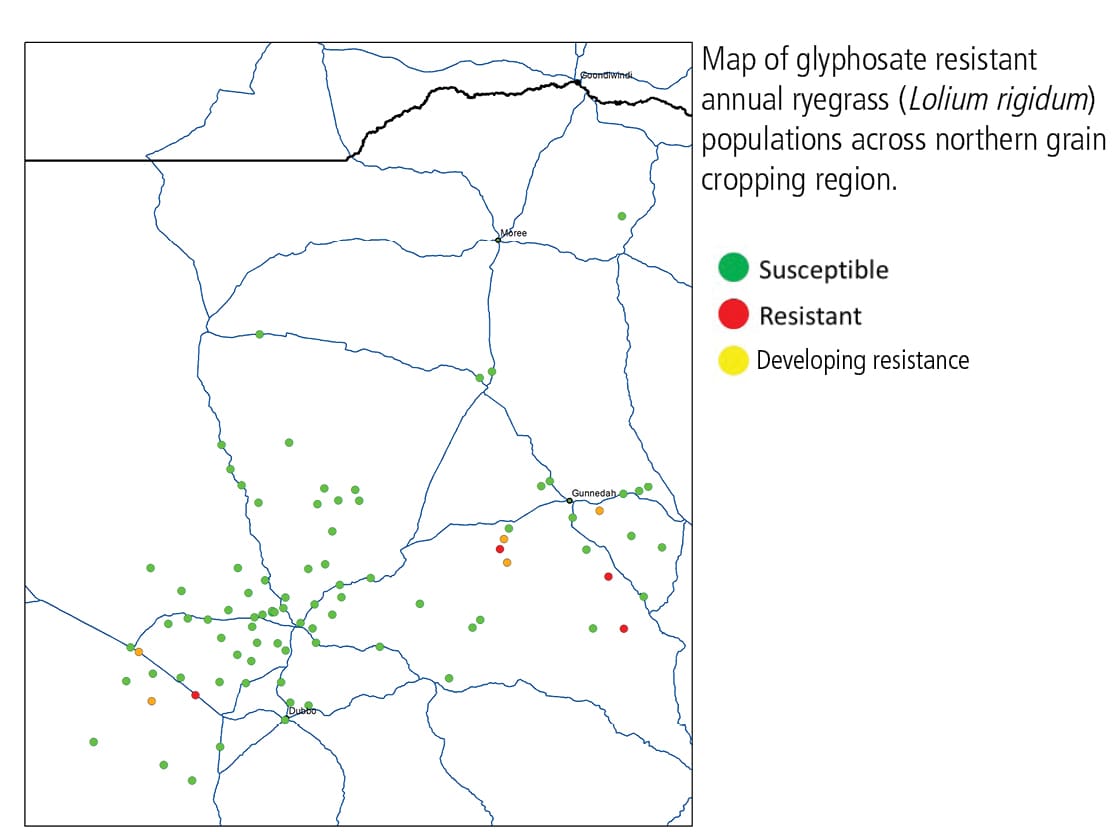THIS winter, researchers are recommending that growers and agronomists consider collecting live plant samples for herbicide resistance testing as a first step to identify and manage herbicide resistance in crop.
The first multi-species herbicide resistance survey conducted in the northern grain growing regions of New South Wales and Queensland has shown that testing for herbicide susceptibility is well worthwhile as there are likely to be products that are still effective on weeds that are resistant to other modes of action.
Results from the ‘Quick Test’, offered by Plant Science Consulting, will usually provide a guide for herbicide strategies to use in the current season to stymie the effects of herbicide resistance.
If weeds escape herbicide applications early in the season they will add large quantities of seed to the weed seed bank for next year, but if these plants can be killed this season their impact will be greatly reduced.
Testing weed seed at the end of the season is also a valuable tool to make more informed decisions for next season’s herbicide program, particularly for pre-emergent herbicides, which cannot be assessed using the Quick Test.
There are three weed seed testing services in Australia, including Charles Sturt University.
The implementation of a variety of WeedSmart tactics, such as the double knock, mixing and rotating herbicides, stopping seed set and harvest weed seed control will also have a lasting impact on weed numbers.
Testing and analysis
With GRDC investment, Charles Sturt University (CSU) NSW’s Dr John Broster and Queensland Department of Agriculture and Fisheries’ Dr Michael Widderick led their respective teams through the process of testing samples and analysing the results for weed seed collected throughout the Northern cropping region in 2016 and 2017.

Charles Sturt University’s Dr John Broster recommends growers conduct regular herbicide resistance testing to better inform their herbicide program decisions.
Weed seed samples were collected from 440 paddocks across northern NSW (244) and Queensland (196).
The seeds were sown in controlled conditions and when the plants reached the three to five leaf stage they were tested for resistance to a range of herbicides.
While collecting weed seed samples the researchers also assessed the weed density in each surveyed paddock.
The winter-growing weed species collected across the northern region and screened at CSU included annual ryegrass, wild oats, barley grass, brome grass, wild radish, Indian mustard, turnip weed and African turnip weed.
For NSW, this survey adds weight to other weed surveys conducted over recent years.
Paddock surveys
Dr Broster said around 1000 paddocks in NSW and Queensland had now been surveyed between 2014 and 2018.
Wild oats is widespread across NSW and Queensland, having been found in just over half the paddocks surveyed.
Annual ryegrass was also very abundant but so far only found in NSW, where it was present in almost 70 per cent of paddocks surveyed.
Barley grass, brome grass, Indian mustard weed and turnip weed were found only in NSW while wild radish and African turnip weed were mainly found in Queensland.
“The stand-out finding from our broader testing in NSW is that approximately 60 per cent of collected annual ryegrass populations were resistant to diclofop, sulfometuron and imazamox/imazapyr,” Dr Broster said.
“Resistance to other commonly used herbicides for ryegrass control is relatively lower, but must be noted if these herbicides are to remain options for future herbicide programs. We measured resistance to clethodim (6pc), trifluralin (7pc) and glyphosate (6pc) herbicides in the collected ryegrass populations sampled across the NSW regions.
“Glyphosate resistance in ryegrass is more prevalent in the northern NSW regions than other parts of the state. Resistance to selective herbicides is lower in the northern NSW region than other parts of the state.”

2016 northern NSW and Queensland survey results summary for winter weed species. (All results quoted below are the percentage of surveyed populations where resistance was detected):
Ryegrass only found in NSW – 94 populations tested. Resistance was found to diclofop (Hoegrass, 44pc), imazamox/imazapyr (Intervix, 33pc), sulfometuron (Oust, 29pc), glyphosate (Roundup, 10pc) and clethodim (Select, 2pc). The sampled populations were susceptible to prosulfocarb + s-metolachlor (Boxer Gold) and pyroxasulfone (Sakura). All but one population was susceptible to trifluralin (Treflan, 1pc developing resistance).
Wild oats – 193 populations tested across Queensland (71) and northern NSW (122). Resistance was found to clodinafop (Topik, 38pc) and Hussar (idosulfuron, 4pc). These populations were fully susceptible to clethodim (Select), glyphosate (Roundup) and triallate (Avadex Xtra).
Barley grass – 17 populations, all in NSW. All susceptible to quizalofop-p-ethyl (Targa), clethodim (Select), mesosulfuron-methyl (Atlantis) and paraquat (Gramoxone).
Brome grass – 13 populations, all in NSW. Resistance found to mesosulfuron-methyl (Atlantis, 36%) only with all populations susceptible to quizalofop-p-ethyl (Targa), clethodim (Select), imazamox/imazapyr (Intervix) and glyphosate (Roundup).
Wild radish – 12 populations from Queensland and northern NSW. Resistance found to chlorsulfuron (Glean, 8pc), diflufenican (Brodal, 80pc) and 2,4D Amine, 77pc. All populations were susceptible to glyphosate (Roundup), imazamox/imazapyr (Intervix) and Atrazine.
Indian hedge mustard – 7 populations found only in NSW. Resistance was found to chlorsulfuron (Glean, 17pc) and diflufenican (Brodal, 43pc). All populations were susceptible to glyphosate (Roundup), imazamox/imazapyr (Intervix), Atrazine and 2,4D Amine.
Turnip weed – 32 populations found in Queensland and northern NSW. Resistance was found to chlorsulfuron (Glean, 19pc) and imazamox/imazapyr (Intervix, 11pc). All populations susceptible to glyphosate (Roundup), Atrazine, diflufenican (Brodal) and 2,4D Amine.
African turnip weed – 17 populations found in Queensland and northern NSW. Resistance found to 2,4D Amine while all populations were susceptible to glyphosate (Roundup), chlorsulfuron (Glean), imazamox/imazapyr (Intervix) and Atrazine.
Source: WeedSmart
For more information about managing herbicide resistant weeds, visit the website: www.weedsmart.org.au

HAVE YOUR SAY